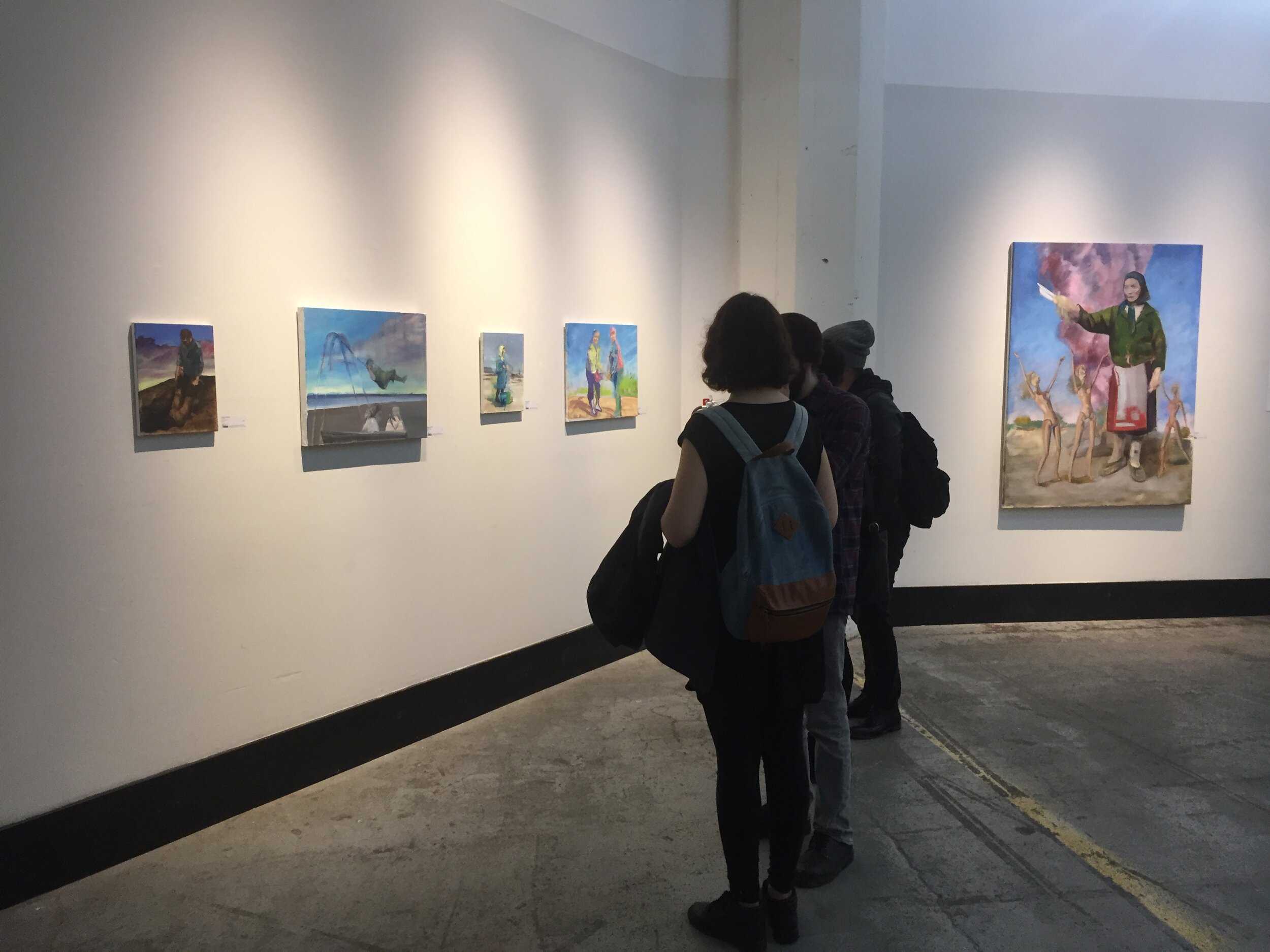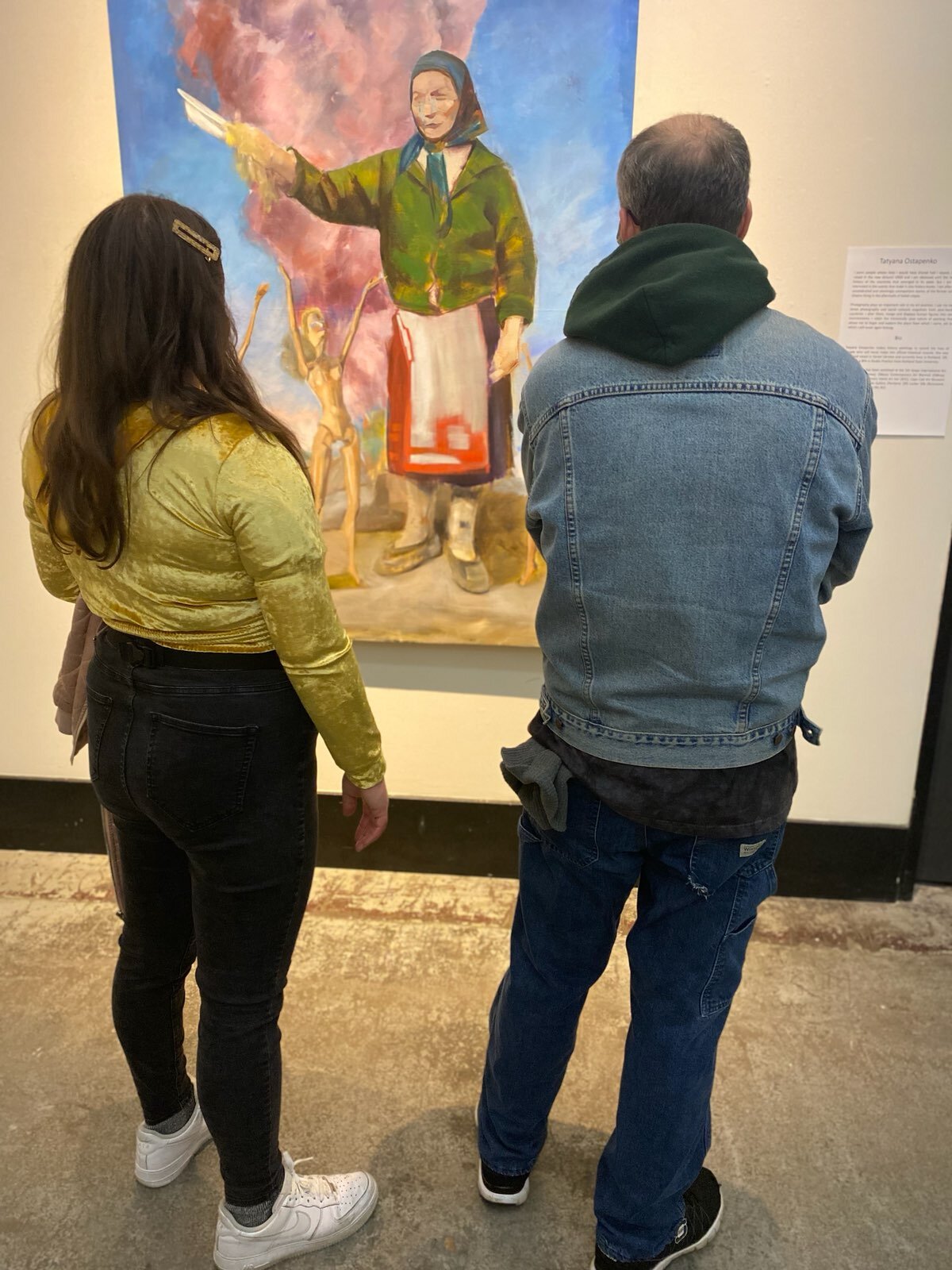INTERVIEWS, DISCUSSIONS AND MUSINGS
This has been a busy month!
I know, it sounds strange because we are on lockdown and can’t go anywhere. But this is precisely the reason.
Suddenly the whole world is much more on my wavelength and a lot of the art world interaction and networking has moved online. While I love seeing artwork in real life, I sincerely dislike the party scene atmosphere of gallery openings and many art events. I hate mingling and making small talk. I like talking about things of substance and mutual interest. Art nerd talk.
And the format of an online studio visit, live video interview and email exchanges suits my nerdy, vehemently introverted self just fine. And now that everyone else is on board with me, I am thoroughly in my element. Yay!
And since a lot of recent questions and discussions come up regularly in my communication with both collectors and arts professionals, I decided to put some of them together in one place here.
Welcome to my breakfast nook video recording studio
It has great natural light for video recordings and interviews
Q&A:
Q: Super interested in your palette. Does it reflect a time period?
A: it does. I always think back to the 90s, the post Berlin Wall Ukraine: lots of mud, dust and concrete with the occasional bright spot of a coveted imported plastic bag or a fake designer sweatshirt. All manner of brown grays with a sudden scream of neon green or extra saturated fuchsia.
This is a great question. It made me realize that this is precisely where my palette comes from. And I always thought it came from 19th century realism with a touch of Die Brücke…
Q: have you ever thought to use objects to paint on that are not canvas/board, or picked other shapes besides squares and rectangles?
A: I have considered it. While I have seen outstanding examples of merging of painting and sculpture, I am not compelled to create those myself. At least not right now while I am still interested in figurative representational painting.
I thoroughly enjoy the suspension of disbelief that the idea of a painting provides within the context of the Western art tradition. Akin to a theater stage once the actors enter it, transcends its nature and becomes an opening to a different world, providing a platform for imagination to unfold. I want to make my supports as non-self aware as they can be, as to make them all but invisible and simply provide the stage for the magic within.
Q: Have you ever felt that there is something that needs to be said? Or some hidden/past that can be revived?
A: There is an element of reluctantly indulged nostalgia in my work. I am repeatedly drawn to images taken around the time I was a child. I think a lot of my interest in the late Soviet and post-Soviet time is purely selfish and self focused. I want to re-live, re-experience my childhood. I want to understand the larger time and epoch when it happened. But ultimately it’s my memory and longing for a child-like perception of the world that dictates my reference choices.
Q: I think Americans react to something in your work, but obviously won’t understand the references. What do you think others are getting from your work and does it matter?
A: I am deeply invested in using reference images that are important, relevant and meaningful to me. I am certain they don’t communicate directly with an American audience, especially if my viewers aren’t too familiar with Soviet/Post-Soviet environs.
I don’t expect to have a universal appeal or deliver some manner of pan-cultural message, yet perhaps the limited palette, my muted color choices, and interactions between the figures and the environment can convey a certain sense of unease, unfinished transition, unsettling change and displacement.
Q: what does the material mean to you? How does this relate to your content?
A: The material reins supreme for me. I am all about paint, the act of painting. The malleability, the unpredictability as well as ability to describe form exactly, to represent the light and create veritable shadows… I am in love with paint!
I’ve always wanted to paint. My content is just something that holds my attention well and long enough to indulge in the luxury of smearing paint around.
Q: Have you considered creating a series, a story that pulls the viewer in?
A: All my recent shows are strongly unified by content. Thematically and visually they are a series. My work was included in a group show at the Ford Gallery a few months ago. The show title was Around the Narrative Lens. The curatorial idea was to show artists whose work is often perceived to have strong narrative and to engage in a dialog about such perception and artists intention. I feel like all my paintings are a part of one large series. A disjunctive, non linear narrative, for certain. More Faulkner than Steven King.
Q: can a painting capture or take further the idea of preservation that treats paint not as a preservative but as blocks of raw intensities. (raw = the light of a moment or a gust of wind on a particular day)
A: Oh, do I dearly wish for raw intensity. I certainly do! I want the abandon of gesture, yet at the same time I absolutely have to improve my representational skills. Perhaps I’ve been focusing on accuracy too much and it’s time to indulge in some abandon.
Sargent and de Kooning on the same surface… Not too high of a goal for after seven years of painting, right?
Q: When piecing together a picture plane with some recognizable elements and blurred edges/spaces, I wonder what (content-wise) ends up on the surface? Similarly, what is cut out and/or reassembled?
A: Sometimes there are new elements that emerge, say, glowing under-painting suggesting smoldering fire, etc, but usually once I’ve decided loosely on the composition, the content takes on the guiding, yet secondary role and the painting becomes an exercise in paint handling and formal decision-making.
Q: is the abstraction and ambiguity you seem after in your work related to the politics tied to your process, or do they want reconciliation?
A: I feel like abstraction and ambiguity has more chances of transcending the very specific time and place and have more universal psychological impact. I also don’t want to come across as preachy and insisting on a particular solution. I am more concerned with intimate individual experience and how it’s affected by the larger political forces.






























































